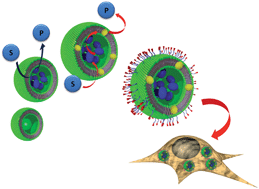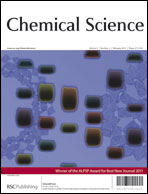From polymeric nanoreactors to artificial organelles
Abstract
Polymeric capsules have emerged as suitable nanocontainers to perform biocatalytic reactions. Recent developments have made it possible to control membrane permeability. Furthermore, their architecture allows the encapsulation of multiple enzymatic species, either in the same, or in different vesicular compartments to create nanoreactors capable of performing cascade reactions. Finally, by adding surface functionalities for cellular targeting and uptake, these polymeric nanoreactors can be taken up by cells, in which they effectively display their catalytic activity. Here we review recent advances made in the field of polymeric nanoreactors and their development towards artificial organelles for cellular applications.


 Please wait while we load your content...
Please wait while we load your content...